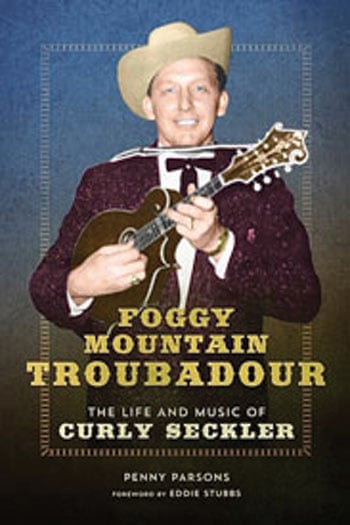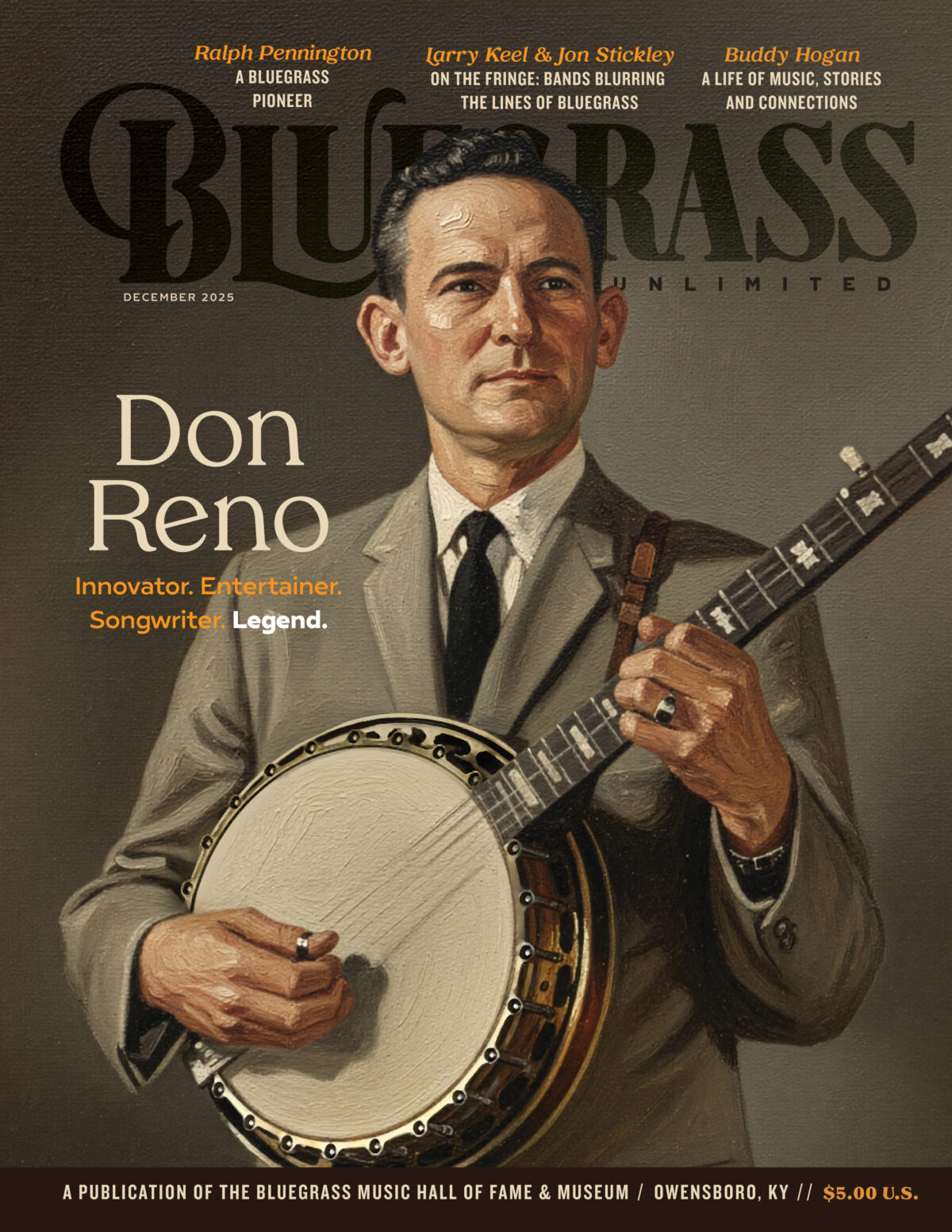FOGGY MOUNTAIN TROUBADOUR
 FOGGY MOUNTAIN TROUBADOUR: THE LIFE AND MUSIC OF CURLY SECKLER
FOGGY MOUNTAIN TROUBADOUR: THE LIFE AND MUSIC OF CURLY SECKLER
BY PENNY PARSONS
University of Illinois Press 9780252081590. Paperback, 304 pages, b&w photos, chapter notes, index, song index, $22.95. (University of Illinois Press, Chicago Distribution Ctr., 11030 S. Langley Ave., Chicago, IL 60628, www.press.uillinois.edu.)
When it comes to books, it is the best of times for bluegrass. Biographies, autobiographies, and annotated discographies are beginning to tell us the rest of the bluegrass story. Foggy Mountain Troubadour: The Life And Music Of Curly Seckler by music journalist Penny Parsons is a welcome addition to the canon. Penny has done a thorough job of documenting the history of Curly’s long life (96 years) and musical career (77 years) with detailed research and countless interviews. She skillfully gives us as much bluegrass history as we need to know, while constantly weaving in Curly’s own colorful memories of those times. Of Charlie Monroe, he said, “He’d fight a circle saw if you messed with him!”
Curly’s early forays into music included playing with his brothers in China Grove, N.C. He would also work with Charlie Monroe, Tommy Scott, and Mac Wiseman. Finally, in 1949, Flatt & Scruggs came calling. He would remain with them almost continuously until 1962, lending his powerful tenor voice to songs like “Some Old Day,” “Why Did You Wander,” and “Roll In My Sweet Baby’s Arms.” Because of Curly’s long tenure with the Foggy Mountain Boys, this book also provides an amazing amount of information about that band. Many of those delicious details come from Paul Warren’s date book, which now belongs to his widow Eloise. She would marry Curly in 1998. Friends called their courtship the “Foggy Mountain romance.”
Curly’s dismissal from the Foggy Mountain Boys in 1962 came as a surprise. He thought, “Good Lord a-mercy, what am I gonna do? Me with four hungry mouths to feed and not even a job.” Resourceful as always, Curly bought a truck and began long-distance hauling. But he never gave up his music. Over the next ten years, he appeared at many of the burgeoning bluegrass festivals and released the album Curly Seckler Sings Again. Then, in 1973, Lester Flatt came calling again, asking “Seck” to join the Nashville Grass. Curly stayed until Lester’s death in 1979 and then assumed leadership of the band, which continued on for another 15 years. For his many contributions to bluegrass music, Curly was inducted into the IBMA Hall Of Fame in 2004.
Penny Parsons doesn’t shy away from the sorrow in Curly’s life—he had to put his young sons in an orphanage and he, himself, had a nervous breakdown—but these incidents don’t define his life. They are part of the fabric. I highly recommend this well-written, highly readable book about a long life well-lived.MHH
